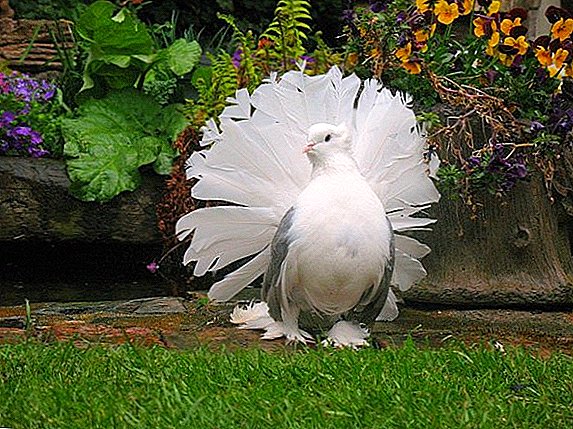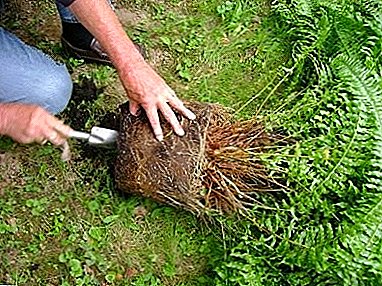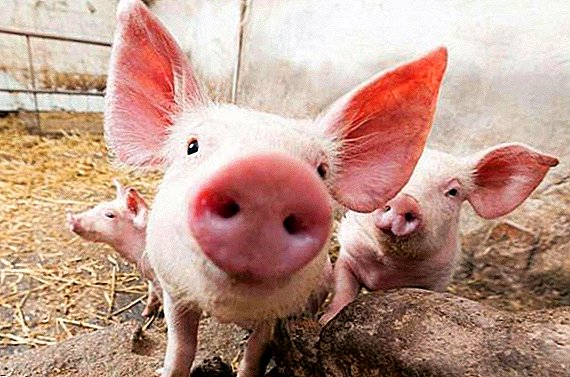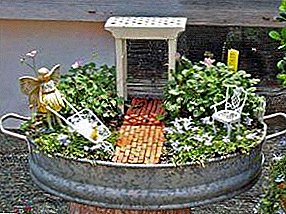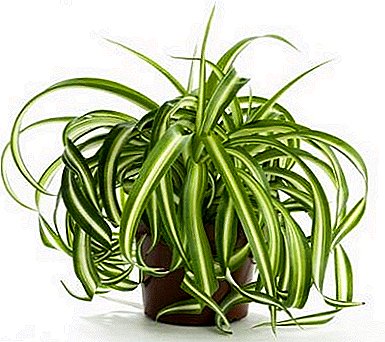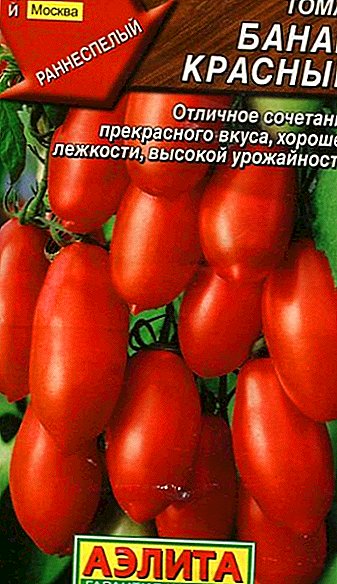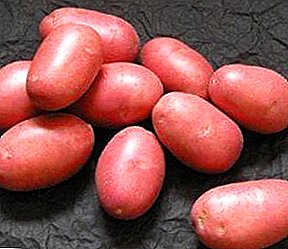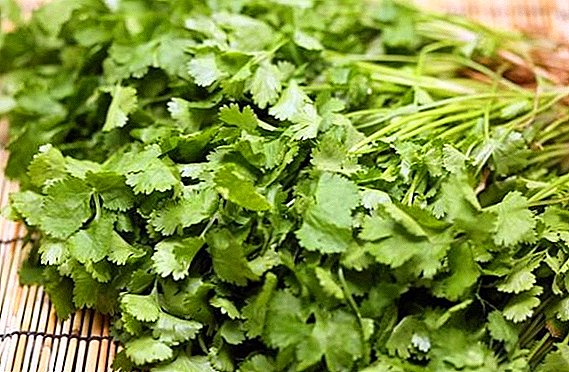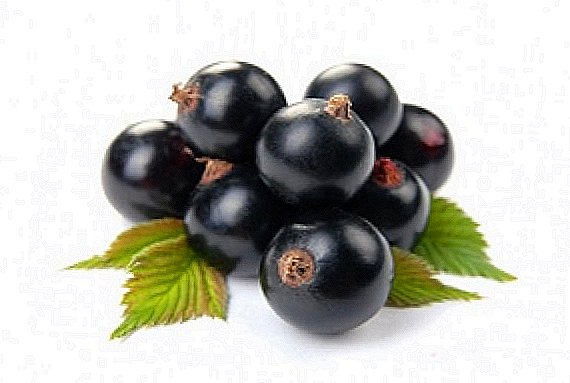
The Latin term Ribes nigrum is translated into Russian as "black currant".
The berries of this plant are very useful due to the huge number of useful trace elements that are part of the pulp and rind of these black "pearls".
Vitamins C, B, P, citric acid, glucose. This is not the entire list of useful compounds that are contained in black currants.
In addition to their nutritional and vitamin quality, these berries can lower blood sugar levels, reduce the likelihood of cancer and Alzheimer's, as well as improve vision.
What are the best varieties of black currant? An exhaustive answer to this question can be found in the information provided below.
There are more than 200 varieties of black currant, and the taste of berries of all varieties is different. Even on the most fastidious gourmet there is such a variety of black currant, which will literally amaze with its taste.
Grade "Hope"

Medium early currants obtained from varieties "Oryol Jubilee" and "Primorsky Giant". The authors are TP. Ogoltsova and L.V. Bayanova, who are employees of the All-Union Scientific Research Institute of Fruit Crops Selection.
The first harvest will be available in late June - early July. Plants are large, erect, branches tightly adjacent to each other.
Shoots grow straight, thickened, matt green, pubescent. Buds are large, egg-shaped, blunt on top, pale pink in color, are formed parallel to the axis of the shoot.
The leaf of this currant has 5 blades, the leaves themselves are large, light green in color, with deep depressions. The blades are sharp at the ends, the middle one is larger than all the others and grows in the shape of a triangle.
The flowers are large, slightly shaped like a bell. Brushes are small (up to 7 cm in length), sufficiently dense, drooping.
The berries are very large (up to 4.2 g in weight), round, black, with a small amount of seeds. Taste currant "Hope" high, acid and sugar in the balance.
This currant is resistant to frost, is not affected by most diseases and pests (powdery mildew, anthracnose, septoria, kidney mite). This variety can be attributed to the self-fertile (61%). Fruits can be harvested not manually, but mechanically, and the harvest will not deteriorate. Yields average - 1.5 kg per bush.
Black currant "Hope" you need to choose and drip like all other varieties. When choosing seedlings, special attention should be paid to the roots, which should not be dried or damaged.
It is also necessary to inspect the outer part of the escape. It should look healthy, have no damage and calmly withstand a slight mechanical impact. Dripping seedlings need to pits 50h50h50 see
The care of these bushes is ordinary and has no differences from similar procedures that should be carried out with other fruit and berry crops. Abundant watering, cultivation and mulching of the soil, pruning "bad" shoots are absolutely standard procedures.
It also does not hurt to conduct treatment of plants with drugs against diseases and insects.
Grade "Selechenskaya - 2"

Early variety of black currant. It was launched in the Institute of Lupine A.I. Astakhov and L.I. Zueva, who crossed the form 42-7 and 4-1-116.
Fruiting begins in the first half of July. Plants are upright, vigorous. The leaves are three-lobed, medium in size, dark green in color, with small wrinkles.
Each blade is long enough with a sharp end. The flowers are very beautiful, red-purple color.
From 8 to 14 flowers are formed in each brush, the brush itself is slightly curved, without pubescence. The berries are large (5.5 - 6.5 g), round, black, with a glossy skin. Taste is rated by the highest score., very harmonious.
The separation from the fruit is dry. Purpose is universal. Productivity depends on the quality of agricultural technology, the number of fruits collected from one bush - 1.7-2.8 kg.
Shrubs of this variety very quickly take root and adapt to the peculiarities of the region's weather conditions. There is immunity to most currant diseases.
The key to obtaining a good harvest and survival of the bushes is the quality of the seedlings. They must be beautiful in appearance, healthy, not break under weak loads and have healthy roots.
The root system should have 2 - 3 branches, which before planting will need to be cut to 7 cm in length. You also need to shorten the tops of the shoots so that there are no more than 5 - 6 lower buds. The landing pattern is normal.
Due to the high adaptability to unstable weather conditions, the bushes of this variety will be able to withstand not only drought, but also the overmoistening of the soil. But it is best to make watering frequent and small, so that water balance is present in the ground.
Mulch will prevent the emergence of weeds, and loosening the soil will increase the access of oxygen to the roots.
Variety "Exotica"

Early variety, fruit begins in early July. The result of joint work of breeders TP Ogoltsova, Z.S. Zotovoy, S.D. Knyazev and L.V. Bayanova from the All-Russian Scientific Research Institute of Fruit Plant Breeding and the Siberian Horticultural Research Institute.
Plants are upright, not very thick, but vigorous. Young shoots of light green color, without pubescence, with a sufficiently large diameter. Buds are large, pink, asymmetric egg-shaped with a blunt tip.
The leaves are five-lobed, very large, with a rough and curved surface, green in color with a slight glossy sheen. The middle lobe of a triangular shape, the largest, with pointed ends.
The rest of the processes are with a blunt tip, small in length. The flowers are large, slightly colored. Medium brushes, hang down, forming 8 - 10 berries in one brush.
The berries are large (up to 6.5 g), round, black in color, glistening in the sun, with a thin skin. The flesh is sweet and sour, very aromatic, has a refreshing effect.
The purpose of the berries in this class is universal. Average yields - 1 kg from a bush. Bushes are 55% self-bearing, resistant to falling temperatures, not affected by powdery mildew and columnar rust.
Plants have poor resistance to anthracnose, septoria and bud mite. The berries of currant "Exotica" will not spoil with the mechanical method of harvesting.
The landing pattern is normal. Requirements for seedlings are also ordinary. Immediately after planting, each seedling should be poured abundantly.
Watering, mulching and loosening the soil are devoid of features. Sure to process bushes from anthracnose and septoriaand also to trace the appearance of signs of the presence of a kidney tick.
It is also interesting to read about planting and caring for red currants.
Grade "Dobrynya"

Medium late variety, fruits ripen by the second decade of July. Was bred when crossing the variety "Raisin" and forms 42-7 A.I. Astakhov in the Institute of Lupine.
Plants are very compact, as they are sredneroslye. Young branches are medium in diameter, not curved, green-purple in color, almost not shiny, with a slight pubescence.
The leaves are formed by 3 blades, the size of the leaf plate can be both medium and large. The leaves themselves are green, with wrinkles.
The flowers are large, light yellow. Brushes are thick, twist a little, of green color, in each 6 - 10 flowers are formed. The fruits are large (5.5 - 6.5 g), elliptical, black, with a shiny and dense skin.
The berries are very fragrant, with sweet and sour notes. The number of fruits from 1 plant on average is 1.5 - 2.5 kg.
Currant bushes "Dobrynya" calmly tolerate small fluctuations in temperature, as well as short drought. Not affected by powdery mildewbut may suffer from other fungal diseases, as well as from the kidney tick.
Young bushes for planting should be beautiful in appearance and meet typical requirements. Drop them in the usual way. Care of seedlings is also ordinary.
Care ordinary. It is necessary to process bushes against fungus and various pests 3 times per season, otherwise it is unlikely to fully cure the plants later.
Sort "Leningrad giant"

Middle-early variety bred by E.N. Glebova and A.I. Potashova in the St. Petersburg State Agrarian University, and is the result of pollination of the Stakhanovka Altai currant with a mixture of pollen from the exhibition and non-crumbling pollen.
The plants are tall, upright, and their density increases during the fruiting period. Young branches are quite thick, straight, with pubescence, green in color, the tips of the shoots are colored.
On adult bushes, flower buds are grouped, that is, 6 to 8 pieces are formed together. Such small “twigs” are characteristic of nearly a few currant varieties, including the Leningrad Giant.
Buds short, but thick, egg-shaped, pink-magenta bright color, rejected from the shoots. The leaves are large, with five lobes, light green in color and a matte surface.
The middle lobe is the longest, very wide, with a tip on the tip. The flowers are large, the petals are painted in pale red. The brushes are different, there are both short and long, 6 - 13 fruits are formed in one brush.
The berries are medium (1.2 - 2.2 g), round, black in color, with shiny and thin skin.
Despite the dry break, the fruit will not crumble. The taste of the pulp is very good, and the fruits of this currant have a characteristic pleasant smell.
High yield (3 - 4.5 kg from one plant), self-pollination is more than 50%. Berries can be collected mechanically. Also grade resistant to temperature drops, but the branches can break under strong gusts of wind, especially during the fruiting period.
Also, the "Leningrad Giant" does not have special immunity to fungal infections and insects.
Seedlings should be healthy looking, should not break during the inspection. Also, there should be no signs of fungus or pest damage. The landing pattern is normal.
Care is normal. When preparing the beds for the winter, care should be taken to protect the bushes from frost, as some of them will not be able to recover from the cold winter winds. It is very important to carry out medical treatments against fungal diseases and parasites, which can cause irreparable harm to the bushes, and, thereby, to the future harvest.
Variety "Anniversary Copan"

Middle currant bushes which bear fruit in the second - the third decade of July.
Characterized by high yields, self-fertility, good immunity to fungal infections and parasites, as well as the ability to tolerate a lack of moisture.
This variety is suitable for technical harvest. The bushes of this currant are high, medium-sprouting. Shoots are long and thick, bend well.
Brushes average length, fairly dense.
Variety "Jubilee Kopania" was bred in 1983 when crossing the variety "News Prykarpatsya" and the hybrid form C-106. The last "parent" instilled in the new variety resistance to all known diseases and parasites.
The authors are K.N. Kopan and V.P. Kopan. The berries are large, reaching 4–4.5 g in weight, oval-spherical, black, with glossy and durable skin.
The separation from the fruit is dry. The flesh of the berries is sweet and sour, green-brown, with an almost elusive flavor. Berries ripen almost simultaneously, suitable for use fresh or for various kinds of processing.
Seedlings must meet the usual requirements. The main thing is that they are healthy. To young bushes accurately survived in a not too mild climate, immediately after planting, they should be covered for a short time.
The landing pattern is normal. At the end of planting each bush will need water and mulchso that they all feel comfortable. Before planting it is advisable to dip the roots in the clay mash.
The care is very ordinary, that is, it is important to water and mulch the soil. These plants do not need treatment, but for preventive purposes, you can spray bushes with appropriate preparations a couple of times.
You also need to remove the broken or damaged parts of the shoots so that they do not take away the "vital forces" from the healthy part of the bush.
Now you can see that there is absolutely nothing heavy in growing black currants. If you have already planted cucumbers or tomatoes, and at the same time you have completed the seedling stage, then you will certainly cope with black currant bushes.


